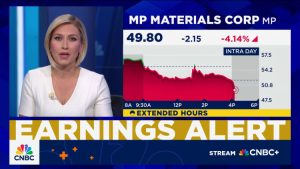Each year, more and more Britons choose to take advantage of the tax breaks offered by an ISA. Whether the goal is to save for a house or earn a second income, it’s an increasingly popular option.
Those with some market knowledge and a higher risk appetite often opt for a Stocks and Shares ISA. This allows the investor to pick their own assets, from commodities and bonds to stocks, shares, and investment funds.
Unlike a Cash ISA with a fixed interest rate, the returns from a Stocks and Shares ISA depend on the investor. Finding the right balance between risk and return is critical.
Please note that tax treatment depends on the individual circumstances of each client and may be subject to change in future. The content in this article is provided for information purposes only. It is not intended to be, neither does it constitute, any form of tax advice. Readers are responsible for carrying out their own due diligence and for obtaining professional advice before making any investment decisions.
Estimating returns
One of the easiest ways to aim for a steady return is by investing in an index tracker. The FTSE 100 has delivered annual returns above 6% on average for the past 20 years. The S&P 500 has done even better, returning more than 10% on average per year.
Both options would have returned more than a Cash ISA over the past decade. That said, both indexes have experienced years of significant losses, which can be difficult for risk-averse investors to stomach.
To bring in £3,000 a month (£36,000 a year), a portfolio returning 10% on average would need £360,000 invested. It would take over 25 years to reach that amount by investing £300 every month and compounding the returns.
By picking individual stocks and following a well-formulated strategy, it’s possible to outperform an index tracker. However, this can increase the risk of losses.
Switching to dividends
Income investors often switch to high-yielding dividend stocks once their desired level is reached. The goal is to secure a regular, stable income regardless of market fluctuations.
The UK market is particularly favourable in this regard, with many stocks regularly yielding over 6%. The ideal stocks here are those with long dividend track records and low volatility.
With that in mind, investors may want to consider the UK’s largest bank, HSBC (LSE: HSBA). It has a yield of 5.9% and low volatility — below 1% in the past month. Its size and international reach add to its stability, shielding it from localised economic troubles.
That said, it’s seen a fair share of problems. In the past, the bank has been accused of inadequate risk management and failure to tackle fraudulent behaviour. Now, it’s considering a split between its East and West departments to better manage operations. This ambitious plan may be costly and could hurt profits if things don’t go smoothly.
But for now, things are going well.
HSBC is far from the top dividend payer in the UK but has an excellent track record of payments. This type of reliability is important when aiming for income. Moreover, the stock has grown at an average of 8% per year over the past five years.
When adding dividends to that, returns could be upwards of 14% at times. With those averages, a portfolio of only £250,000 would be enough to draw down £3,000 a month.
However, that would be very difficult to maintain in the long run. With a well-diversified portfolio of UK income stocks, an investor could aim for a 6% average yield and annual growth of 4% to 5%.
This post was originally published on Motley Fool





